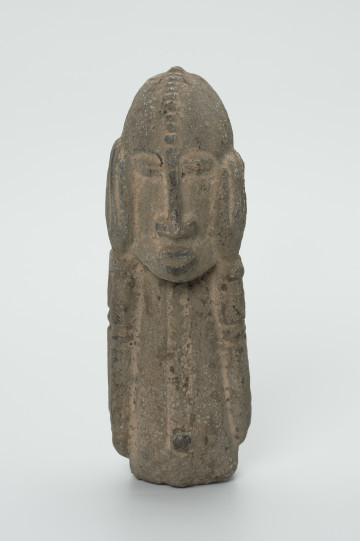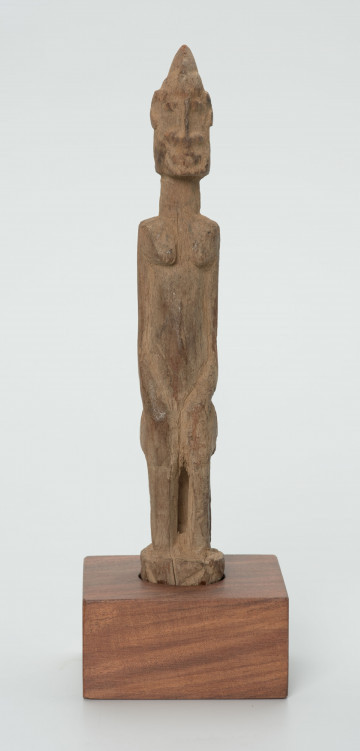
Figure - ancestor
między 1985 — 1990
National Museum in Szczecin
Part of the collection: Collection of Dogonian art
The Dogon are a people living in the south-central part of the Republic of Mali. They use several dialects of Dogo-so language (so - language, word), which is traditionally included in the group of Voltaic languages (gur) belonging to the Niger-Congo subfamily of the great Congo-Kordofan family. However, recent research postulates the recognition of the Dogo dialects as separate languages, forming an independent language family, within the Voltaic languages, or separate even from the Niger-Congo languages. The fact is that these dialects are very different from each other and the Dogon from villages sometimes only a few dozen kilometres away use Bamana for communication, which plays the role of a vehicular language in Mali. Apart from Dogo-so the Dogon have a separate ceremonial language, called Sigi-so. Only members of the secret Awa society know it. The Sigi-so language has much in common with the languages of the Mande group (belonging to the same sub-family as the languages of the Voltaic group). Religious and poetic texts are recited in it. Some researchers believe that it was spoken by the ancestors of the Dogon in the country of Mande, i.e. the former homeland. There are two myths explaining the origin of the ceremonial language, both of which trace its genesis to creatures inhabiting the bush. The first one points to Andumbulu, mythical low-growing creatures, to whom the Dogon also owe their masks and the Sigi festival. The second myth mentions Gyinu, a deity inhabiting the branches of trees, who betrayed his knowledge of the Sigi-so language to a Dogon shepherd.The teaching of Sigi-so is the occupation of old men, the pupils are young candidates for the mask society (Awa). It is most often held on the occasion of Dama and Sigi festivals. The transmission of knowledge always takes place in the bush at some distance from the village, so that children, women and strangers cannot hear or observe anything.
Ewa Prądzyńska
Author / creator
Dimensions
cały obiekt: height: 22 cm, width: 5 cm
Object type
figure
Creation time / dating
Creation / finding place
Identification number
Location / status

między 1985 — 1990
National Museum in Szczecin

między 1901 — 1950
National Museum in Szczecin

między 1951 — 2000
National Museum in Szczecin
DISCOVER this TOPIC
Museum of King Jan III's Palace at Wilanów
DISCOVER this PATH
Educational path